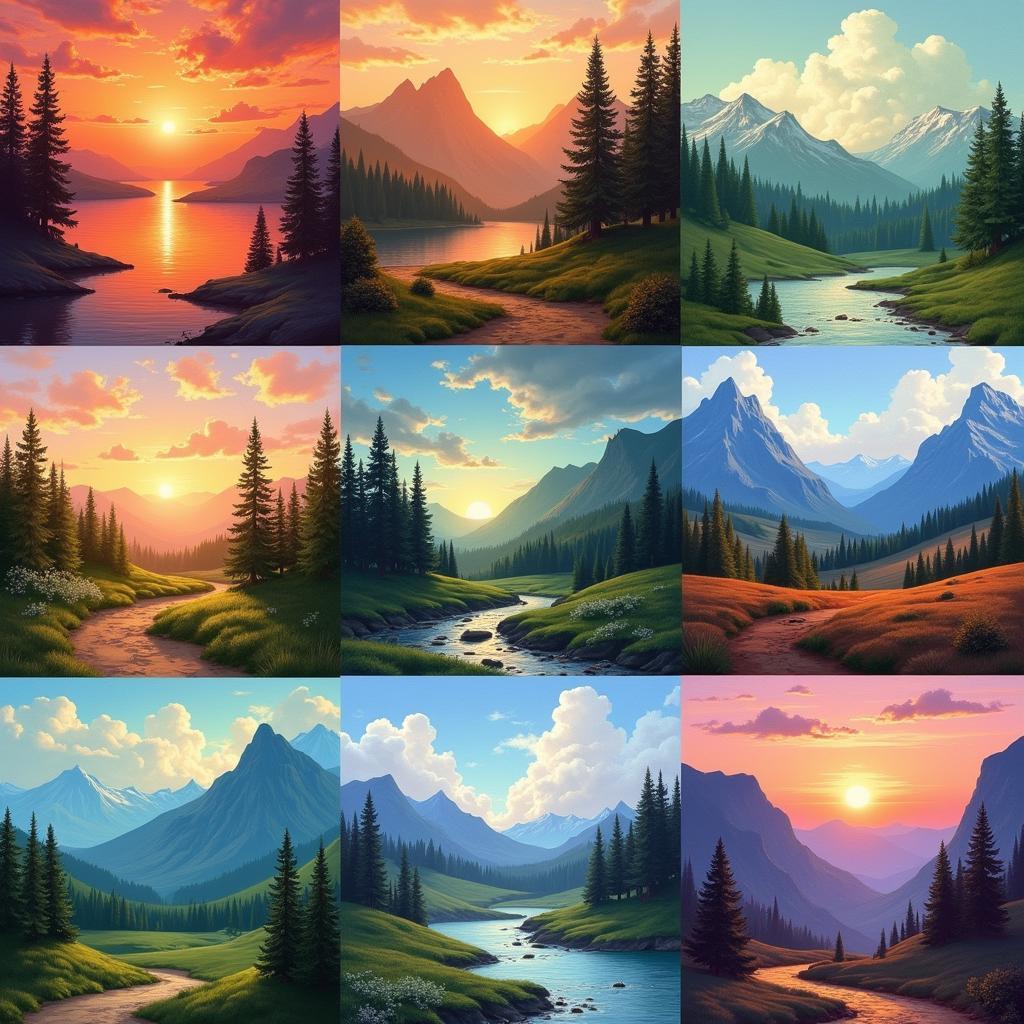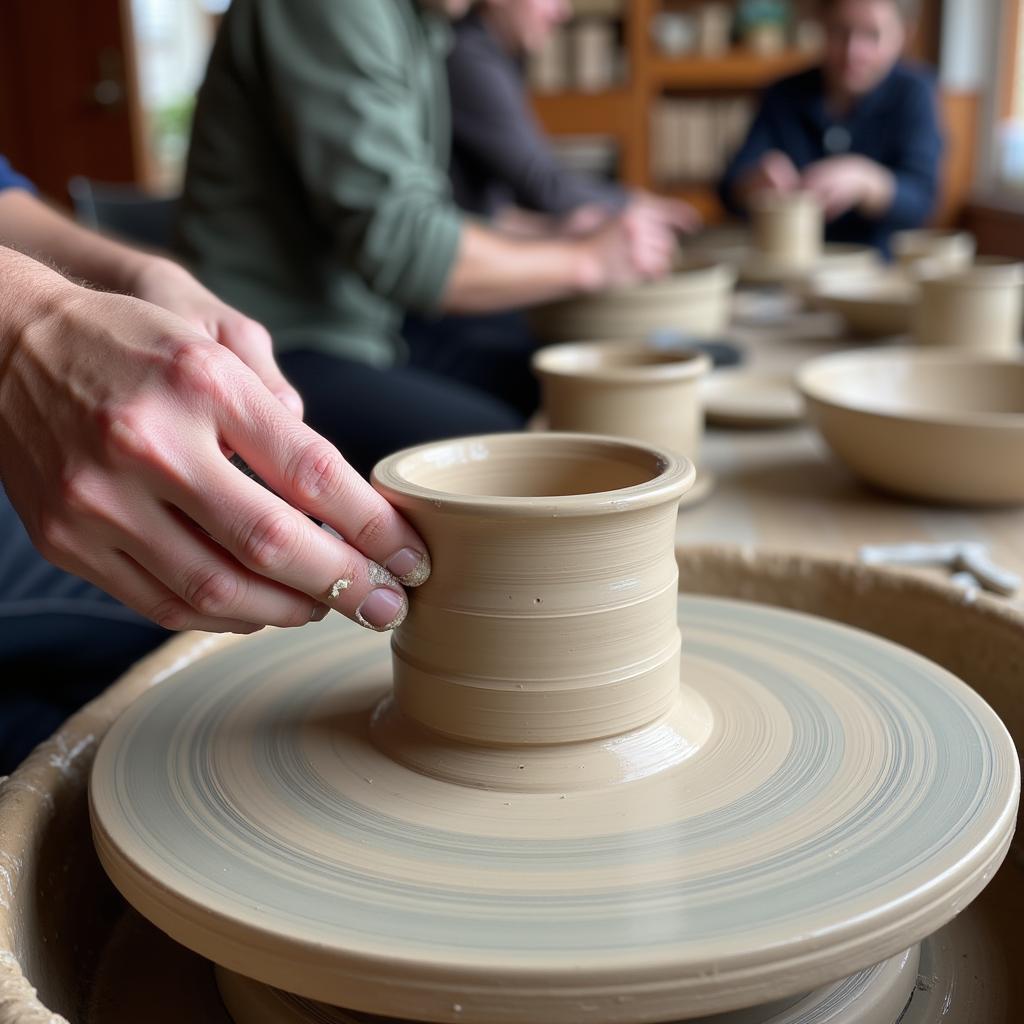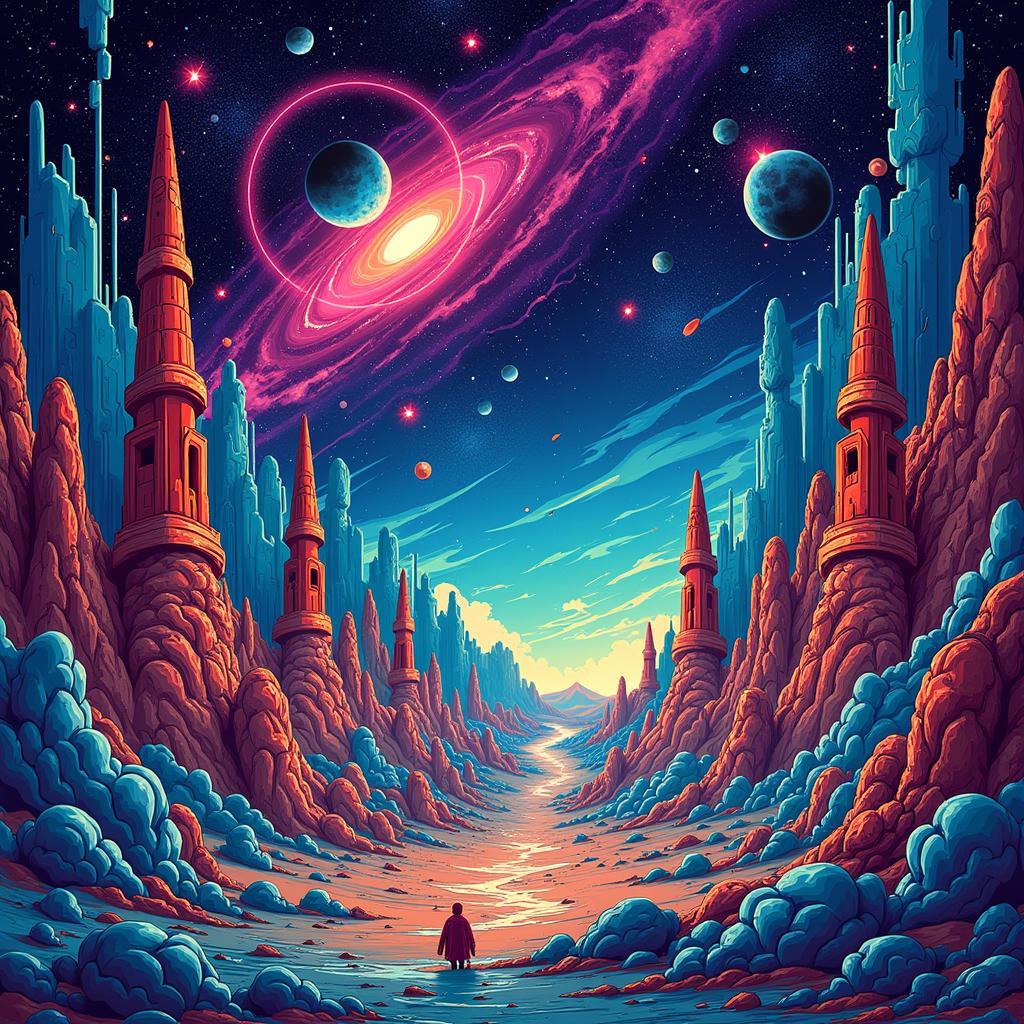Mastering Landscape Art Painting: Techniques and Inspiration
Landscape Art Painting has captivated artists and viewers for centuries, offering a unique way to connect with the natural world and express artistic vision. From sweeping vistas to intimate studies of nature, landscape paintings invite us to explore the beauty and power of our surroundings. This exploration, however, requires a keen eye, a steady hand, and a deep understanding of artistic principles.
Whether you’re a seasoned artist or just starting your artistic journey, delving into landscape painting can be a rewarding experience. It allows you to capture the essence of a place, evoke emotions through color and composition, and develop a deeper appreciation for the world around us. Let’s explore the captivating world of landscape art painting, unlocking its secrets and discovering the techniques that bring these breathtaking scenes to life.
Understanding the Fundamentals of Landscape Art Painting
Before embarking on your landscape painting journey, it’s essential to grasp the foundational elements that make a landscape painting successful. These elements include composition, perspective, color theory, and the skillful use of light and shadow.
Composition: Framing Your Narrative
Composition is the arrangement of elements within your painting, guiding the viewer’s eye and telling a story. Strong compositions often utilize the rule of thirds, leading lines, and a clear focal point to create a sense of balance and harmony. Consider the placement of your horizon line, the distribution of key elements, and the negative space surrounding them.
Perspective: Creating Depth and Dimension
Perspective is crucial for creating a realistic sense of depth in your landscape paintings. Linear perspective, with its vanishing points and converging lines, is a powerful tool for depicting receding landscapes. Atmospheric perspective, on the other hand, uses changes in color and value to suggest distance, creating a sense of depth and atmosphere.
Color Theory: Evoking Mood and Atmosphere
Color plays a vital role in landscape art painting, evoking specific moods and atmospheres. Warm colors like reds, oranges, and yellows can convey energy and vibrancy, while cool colors like blues, greens, and purples create a sense of calmness and tranquility. Understanding color harmony and contrast will allow you to create visually appealing and emotionally resonant landscapes.
 Exploring Color Harmony in Landscape Painting
Exploring Color Harmony in Landscape Painting
Mastering Different Landscape Painting Techniques
From traditional oil painting to contemporary acrylics and watercolors, numerous techniques exist for bringing your landscapes to life. Each medium offers unique characteristics and challenges, allowing you to experiment and find the style that best suits your artistic vision.
Oil Painting: The Classic Approach
Oil painting, known for its rich colors and blendability, allows for detailed rendering and subtle transitions. Its slow drying time allows for extensive blending and layering, making it ideal for capturing the nuances of light and shadow.
Watercolor Painting: Capturing Light and Transparency
Watercolor painting, with its translucent washes and delicate textures, is perfect for capturing the ephemeral qualities of light and atmosphere. Its fluidity and spontaneity make it a challenging yet rewarding medium for landscape artists.
Acrylic Painting: Versatility and Vibrancy
Acrylic paints, known for their quick drying time and vibrant colors, offer a versatile medium for landscape painting. Their adaptability allows for various techniques, from thick impasto applications to thin washes, enabling artists to explore different styles and textures.
 Comparing Oil, Watercolor, and Acrylic Landscape Paintings
Comparing Oil, Watercolor, and Acrylic Landscape Paintings
“Understanding your chosen medium is paramount to achieving successful landscape paintings,” advises renowned landscape artist, Amelia Dubois. “Experiment with different techniques and find the approach that best expresses your personal style.”
Finding Inspiration and Developing Your Unique Style
Finding inspiration for your landscape paintings can come from various sources, from direct observation of nature to studying the works of master artists.
Observing Nature: Immersing Yourself in the Landscape
Spending time outdoors, sketching, and taking photographs can provide invaluable inspiration for your landscape paintings. Immerse yourself in the environment, observing the subtle changes in light, color, and atmosphere. This direct interaction with nature will inform your artistic vision and enrich your work.
Studying Master Artists: Learning from the Greats
Studying the works of renowned landscape painters, such as Claude Monet, J.M.W. Turner, and Georgia O’Keeffe, can provide valuable insights into composition, color, and technique. Analyzing their approaches can inspire you to develop your own unique style and artistic voice.
Conclusion: Embracing the Journey of Landscape Art Painting
Landscape art painting is a continuous journey of exploration and discovery. By understanding the fundamental principles, mastering various techniques, and finding inspiration in the world around you, you can create captivating landscapes that express your artistic vision. Remember, practice, patience, and a genuine love for nature are key to unlocking the full potential of landscape art painting. So, pick up your brushes, embrace the challenge, and embark on this fulfilling artistic adventure. You can find more inspiring artwork related to scenery art painting.
FAQ
-
What are the essential materials for landscape painting? Essential materials include paints (oil, acrylic, or watercolor), brushes, canvases or paper, a palette, and a medium (if using oils or acrylics).
-
How do I choose a landscape composition? Consider the rule of thirds, leading lines, and a clear focal point to create a balanced and engaging composition.
-
How can I improve my perspective in landscape paintings? Practice drawing basic shapes in perspective and study the works of master landscape artists.
“Don’t be afraid to experiment and break the rules,” encourages Dubois. “The beauty of art lies in its ability to express individual perspectives and interpretations.”
Exploring different styles can be a valuable learning experience, such as modern art landscape painting or the unique charm of Australian art paintings. For those interested in capturing a sense of tranquility, solitude art offers a compelling subject matter. And if you’re seeking inspiration from a specific location, you might find art on the island marshall nc to be a fascinating starting point.
Common Landscape Painting Challenges
-
Mixing realistic colors: Start with a limited palette and focus on understanding color relationships. Gradually introduce new colors as you gain experience.
-
Creating depth and distance: Practice using atmospheric perspective, adjusting color saturation and value to create a sense of recession.
-
Capturing accurate proportions: Use a viewfinder or grid to help translate the scene onto your canvas or paper.
Other Helpful Resources
You might also be interested in exploring other painting genres, such as portraiture or still life. Consider researching different painting techniques, like impasto or glazing, to further expand your artistic skills.
For assistance, please contact us at Phone Number: 02462573573, Email: danteum@gmail.com Or visit us at Savico Megamall, 7-9 Đ. Nguyễn Văn Linh, Gia Thụy, Long Biên, Hà Nội 10000, Việt Nam. Our customer support team is available 24/7.




